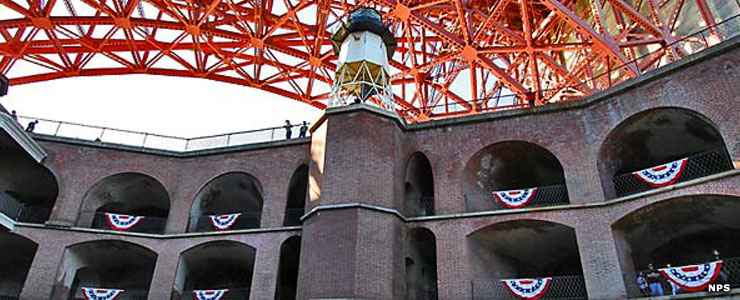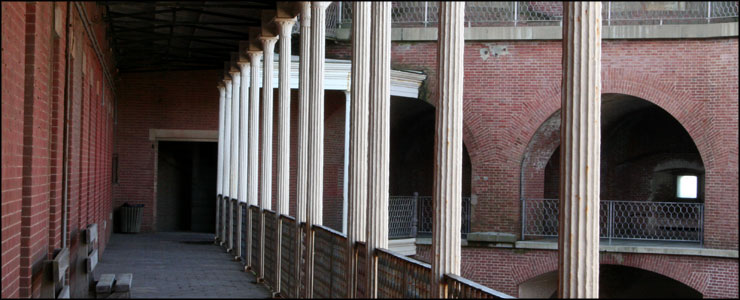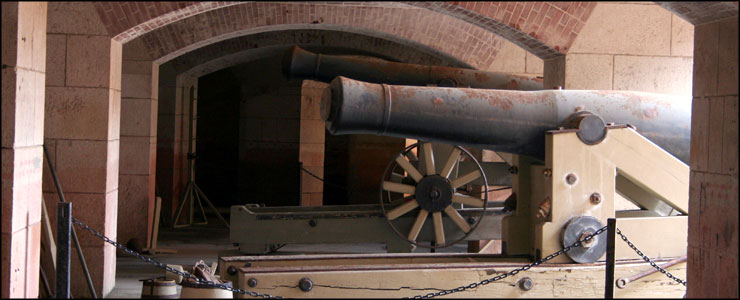Fort Point National Historic Site

Fort Point National Historic Site
Fort Point was built just before the Civil War to provide protection from hostile warships to San Francisco Bay. The site is now almost entirely beneath the southern approaches to the Golden Gate Bridge.
The Spanish had built an adobe fort (Castillo de San Joaquin) on the same spot in 1794. After Mexico gained independence in 1821, the Mexican army took control of the fort but they abandoned the site in 1835 when they moved the army to Sonoma. After that, the adobe began to crumble under the forces of wind and rain. In 1846 (shortly after the Mexican-American War broke out), Capt. John C. Fremont with Kit Carson and several others captured the empty castillo and disabled the cannons that had been left there.
After the 1849 California Gold Rush, the San Francisco area built up quickly and the federal government decided San Francisco Bay needed fortifications built. Within a few years, coastal defenses were built at Alcatraz, Fort Mason and Fort Point. In building Fort Point, miners blasted the formerly 90-foot cliff down to 15 feet high so that artillery could be placed just above the water line. That would allow shells to ricochet off the surface of the water and hit targets at the water line, hopefully causing them to sink faster. The building featured seven-foot-thick concrete walls and was sited to defend the maximum amount of harbor area. It took eight years to build the fort and the first cannons were set in the very first days of the Civil War.

Casements at Fort Point
Fort Point was garrisoned and soldiers stood lookout for an enemy that never came. A Confederate ship did eventually come to attack San Francisco Bay but it arrived months after General Lee had surrendered and the war was over.
During the Civil War, similar forts on the East Coast had suffered severe damage and the Army decided masonry forts were not much protection against rifled artillery. Fort Point was shortly abandoned, although it was still considered important enough that the property continued to be protected from the elements.
Between 1892 and 1900, all 103 cannons mounted at Fort Point were sold for scrap. Between 1900 and 1941 the fort was used for barracks, training and storage purposes. There was a time after 1913 when the fort was modified to be used as a detention barracks but that activity was soon transferred to Alcatraz and was used by the Army there until Alcatraz was turned into a federal prison. Soldiers representing the 6th US Coast Artillery were stationed at Fort Point during World War II to guard minefields in the area and to watch over the anti-submarine net that had been strung across the Golden Gate entrance to the bay.
Because of its military history, its architecture and masonry construction, and its association with maritime history, Fort Point has had tremendous significance for military architects and historians. President Richard Nixon signed a bill creating the Fort Point National Historic Site on October 16, 1970.
Fort Point National Historic Site is open most of the year Friday through Sunday, 10 am to 5 pm, except for Thanksgiving, Christmas and New Year's Days. From early June through Labor Day, the site is open Thursday through Tuesday, 10 am to 5 pm. Visitation is free of charge.

Cannon on display at Fort Point National Historic Site
Top photo courtesy of the National Park Service
Other photos courtesy of David Corby, CCA-by-SA 3.0 License